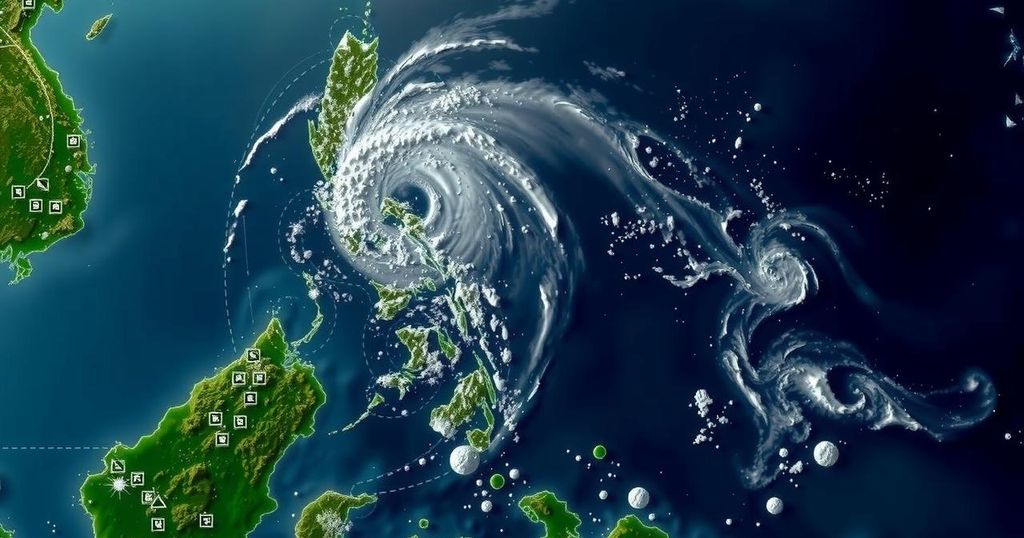Typhoon Toraji Strikes Philippines, Prompting Urgent Relief Efforts

Typhoon Toraji has severely impacted northern Philippines, causing floods, power outages, and displacing thousands as the country braces for an approaching storm. Despite the challenges, government efforts for relief are underway, with international assistance being provided to aid recovery efforts in hard-hit regions.
Typhoon Toraji has ravaged the northern regions of the Philippines, leading to significant flooding, downed trees, and widespread power outages. Following its weakening into a tropical storm, Toraji has now moved towards the South China Sea, yet authorities remain alert as another potential storm approaches. This sequence of disasters has stressed the already strained infrastructure and emergency response systems, especially in the Luzon region which has faced multiple calamities in a brief span of time. The disaster has compelled government efforts to clear blocked pathways for food and aid to reach affected communities. President Ferdinand Marcos Jr. has assured the public of ongoing relief operations despite challenging weather conditions, emphasizing the commitment of disaster-response teams. In Cagayan province alone, numerous towns reported flooding, impassable bridges, and extensive power outages, complicating evacuation and assistance efforts. Preventive measures were taken ahead of Toraji’s landfall, with evacuations ordered in vulnerable villages. Educational institutions have closed, and local transport services have been halted in anticipation of the storm’s impacts. Previous storms have resulted in catastrophic losses, highlighting the Philippines’ ongoing struggle against natural disasters. International aid has begun to flow into the region, with countries like the United States and various Southeast Asian nations offering support. The Philippines, prone to approximately 20 typhoons annually, faces persistent challenges due to its geographical vulnerabilities, underscoring its status as one of the world’s most disaster-affected nations. The memory of Typhoon Haiyan in 2013, which caused extensive devastation, looms large as the nation braces for potential further calamities in the coming days.
The Philippines is situated in a region that frequently experiences tropical storms and typhoons. Given its geographical location, the country is subjected to approximately 20 major typhoons each year, impacting livelihoods, infrastructure, and public safety. Beyond typhoons, the Philippines also grapples with earthquakes and volcanic eruptions, contributing to its reputation as one of the most disaster-prone countries globally. The recent sequence of seasonal storms has placed immense pressure on emergency services and prompted urgent governmental and international responses. The impact of storm season is often devastating, with previous events resulting in high mortality rates, significant property damage, and disruptions to essential services. The frequency of these disasters necessitates robust disaster preparedness and response strategies.
In conclusion, Typhoon Toraji has further compounded the difficulties faced by the Philippines in the wake of prior storms, showcasing the urgent need for effective disaster response mechanisms. The assurance from President Ferdinand Marcos Jr. of ongoing support and relief highlights the government’s commitment to addressing the immediate needs of affected communities. As the nation remains vulnerable to subsequent weather disturbances, the importance of international aid and local preparedness becomes ever more critical in mitigating future disaster impacts.
Original Source: www.seattletimes.com








